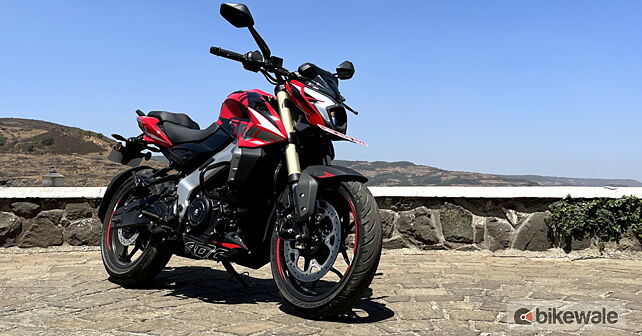When we leaked the first images of the Bajaj Pulsar NS400Z, it received more flak than praise on our social media channels because it looked quite similar to the smaller and older Pulsar NS200. However, when Bajaj announced its introductory price tag of Rs. 1.85 lakh (ex-showroom), tables turned and appreciation came flooding in. Some even started reminiscing the price of the first-gen KTM 390 Duke which stood at Rs 1.80 lakh when it was launched in 2013.
In this day and age, a 400cc motorcycle, or 373cc, to be precise, for such a price is undoubtedly an enticing deal. But how has Bajaj exactly managed to do that?
Platform sharing
Bajaj has saved a substantial amount of money in the development and production of the Pulsar NS400Z since it shares some of its components with the Pulsar NS200 or the Dominar 400, either in identical or slightly revised form. As Bajaj CEO, Rajiv Bajaj, recently mentioned in one of his interviews, platform sharing and using similar components in multiple products saves investment costs to a substantial extent. Notably, the Pulsar uses the same engine and main frame as the Dominar 400 while the wheels and sub-frame are similar to the NS200.
Cost-effectiveness
Now, the Pulsar NS400Z is priced around Rs. 46,000 less than the Dominar 400. Contributing to this difference is the usage of more budget components for the former. Unlike the Dominar 400’s diamond-cut alloy wheels, the Pulsar gets conventional alloy wheels which look identical to the smaller NS200. Moreover, the Pulsar comes with a simpler box-type swingarm, as opposed to the Dominar’s aluminium-type unit. Plus, the NS gets axially-mounted Grimeca brakes while the flagship Bajaj gets more premium, radially-mounted anchors from ByBre.
One of Bajaj’s representatives also pointed out that the Pulsar NS400Z gets a majority of stuff that incline more towards ‘need’ than ‘want’. For instance, Bajaj did not equip the bike with a TFT screen, which is becoming a norm in this segment. Instead, it chose to give it a more affordable colour LCD dash. However, quite impressively, Bajaj didn’t shy away from bestowing it with other contemporary bits like ride-by-wire and traction control.
Also, the costs involved in the research and development of a product being developed from the ground up are always higher than the one that borrows tried-and-tested components from existing motorcycles. This seems to have played a major role in keeping the investment costs down for the biggest Pulsar.
With the aggressive pricing for Pulsar NS400Z, Bajaj seems to have created the hype that was needed around a motorcycle that’s late to the 300-400cc party. However, since that’s an introductory price tag, it might go up soon. This hike will either be by a considerable amount at once or incrementally over a while, in line with Bajaj’s pattern of consistently increasing the prices of its bikes every few months.
